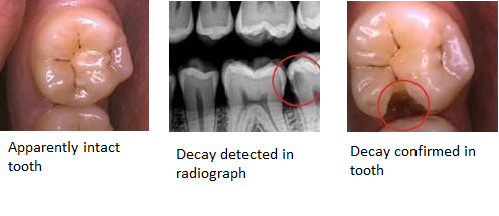We offer a wide variety of payment options for all of your dental needs. Please call our office today if you have any questions about your options. Contact us today!
First Visit Pricing
Initial examination (011): $69
Intraoral pictures (072): included with the examination and taken as deemed necessary
Scale and clean (114): $165 starting price
The fee for a scale and clean varies depending on the level of deposits present in the mouth and the time and effort required to achieve a full and thorough clean.
Higher levels of plaque require longer time and effort for removal and hence will incur a higher fee.
For patients with severe gum disease (periodontitis), a specific gum examination known as periodontal charting is required to diagnose the severity of gum disease. This incurs an additional fee. Periodontal disease requires a deeper clean under the gums and this is different from a standard scale and clean. Costing and item numbers are different and will be discussed with you at your first visit appointment. For more information about periodontitis, read out blog here.
Application of remineralising agent/fluoride (121): $50
Radiographs (022): $49 each
- The type and number of radiographs required will depend on each case.
- More information about radiographs is available in the FAQ section
ZIP Pay and ZIP Money Available
Zip Pay offers multiple options for your dental needs: 6-12 months interest-free period for a credit limit of up to $1000 or larger cases at 6 months interest-free period for a credit limit of up to $10,000. Please note that a surcharge is applied to treatment costs when Zip pay/money is used to cover the merchant fee charged to us by Zip.
Health Fund Info
The Melbourne Smile Clinic is not a preferred provider for any Health Fund as we prefer to operate independently of corporate decisions made by the Health Funds
We believe that private health funds should not influence your right to choose the dental practice providing your treatment.
Rather, patients should choose a practice that they are comfortable with and be sure that their dentist is recommending the best treatment available, not one that meets a health fund’s pre-set terms and conditions.
Preferred providers have contracted dentists who provide treatment at an agreed fee with the private health fund. Health funds then advertise “higher rebates” or “no out of pocket expenses” but only if you visit one of their dentists. We decided not to join the “preferred provider” scheme due to the implications contracted dentistry will have on the quality of dental care available to patients.
HICAPS machine is available so health fund rebates can be claimed on the spot.
Payment Options
We accept a variety of payment options including all major credit cards.
Bad breath (scienfic word: Halitosis) can be caused by factors linked to the mouth and teeth (intra-oral) or due to health issues arising from the lungs, digestive system or hormonal disturbances (extra-oral).
The most common causes of bad breath are intra-oral. The build up of bacteria in the mouth, associated with poor oral hygiene, is one of the main causes. Bacteria grow on plaque (food debris) which builds up around teeth, under the gum margins and tongue surface, hence the need for thorough brushing, flossing and regular professional cleans. More severe cases of bad breath can be attributed to established gum disease as a result of poor oral hygiene and neglect over an extended period of time. The types of bacteria in the oral cavity evolve over time if the plaque level keeps growing and this can lead to more virulent bacteria that cause gum disease and bad breath.
Large cavities in a tooth and infected teeth are also breeding grounds to bacteria that contribute to bad breath. The wearing of appliances such as braces and dentures can also make oral hygiene more difficult, increasing the level of plaque bacteria in the mouth that contribute to bad breath.
If you are concerned about possibly having bad breath, the Melbourne Smile Clinic is able to assist you with the right advice. Call us or book an appointment online.
Reference: Halitosis: Prevalence, risk factors, sources, measurements and treatment- a review of the litterature. Wu J., Cannon R., Ji P. et al. Australian Dental Journal (volume 65, issue 1, pages 4-11), March 2020
Mouth ulcers can be caused by
Recurrent aphtous stomatitis: This is the most common cause of mouth ulcers that have a tendency to recur for no apparent reason. These are more common in younger people (10-29 yoa). They can lead to small, large or a cluster of ulcers which are quite painful. The most common underlying cause for recurrent aphtous ulcers are genetic factors, stress and nutritional deficiencies (mainly of iron, folic acid and vitamin B12). Rinsing with salt water can help heal the smaller and less painful ulcers. Otherwise, topical steroid ointment can be helpful and must be prescribed by a health professional.
Trauma: cheek biting or chewing, rubbing against a sharp tooth/ ill-fitting dentures and piercings, foods that are too hot or hard-textured are all possible causes of ulceration. Usually these ulcers are once-off and disappear once the cause is removed.
Chemical: Ulcers can be caused by a chemical irritant, such as keeping a tablet of aspirin against a tooth in the hope that it will alleviate a toothache (please note that aspirin must be swallowed for any pain-relief result). Another example is the improper use or application of teeth bleaching gel. These contain high levels of peroxide that when in contact with the mucosa for too long, will lead to ulcerative burns.
Medication-related: Chemotherapy medications used in cancer cause oral ulceration while radiotherapy cause ulcers only when used in the head and neck region. Medications used to prevent transplant rejection also have this effect. It is usually recommended that patients ensure that their dental health is good prior to starting such medical treatments. This is because dental treatment is made more difficult and uncomfortable due to the presence of ulcers in the mouth and there are higher risks of infection.
Infections: Viral infections can cause of recurrent mouth ulcers. For example, first-time infection by the Herpes virus can cause red, sore gums and blisters that rupture to form ulcers. In Hand, food and mouth disease, a different virus is responsible (coxsackier virus). The patient develops malaise and fever and ulcers can appear anywhere in the mouth.
Mucocutaneous and autoimmunce diseases:
Mucocutaneous diseases are disorders directly affecting the soft tissues of the mouth. The oral soft tissues are hypersensitive and hyper-reactive. An example is Lichen Planus, a rare condition affecting only 1-2% of the population, where manifestations are sloughing and bleeding gums, ulcerations, altered taste and sensitivity to spicy foods.
Autoimmune diseases include inflammatory bowel diseases such as celiac disease, Crohn's disease and Ulcerative colitis. These can have oral manifestations including mouth ulcers which usually resolve when the underlying disease is treated. Other autoimmune diseases such a Behcet's disease and SLE (systemic lupus erythematous) affect multiple systems in the body, including the oral cavity, leading to ulcerations.
Reference: Recurrent oral ulceration. Aetiology, classification, management and diagnostic algorith. Elizabeth A. Bilodeau, Lalla R.V. Periodontology 2000 (Volume 80, issue 1, pg 49-60) June 2019
They are necessary for a variety of reasons:
For decay detection
During an examination, decay in a tooth can be seen if it is in an area that is visible in the mouth. Often, however, the decay between teeth or in areas where it cannot be easily visualised with the naked eye and hence remain undetected. The following images illustrate how taking a radiograph allows detection of decay otherwise not visible to the naked eye.

For root canal treatment
During root canal treatment, radiographs are an absolute necessity as the dentist is operating inside the tooth within the root system.
For pre-assessement before major dental treatment such as:
Orthodontics
Implant placement
Crown and bridge work
Prior to extraction of teeth
Radiographs show the hidden root structure of a tooth and also its position relative to other teeth and other anatomical structures.
For general diagnosis of pathology and gum disease
Pain in the oro-facial region is often dentally related. Radiographs can be helpful in confirming the diagnosis. Simple visual examination might not provide enough information to allow the dentist to reach a definite diagnosis.
Radiographs also allow assessment of gum disease severity.
The recommendations are:
For decay assessment:
If it is your first visit at the dentist and you have had a lot of fillings in the past or decay is detected in your teeth, radiographs are recommended.
If it is a recall visit and you have had decay in the past and considered high risk of recurring decay, radiographs are recommended at 6-18 months interval for adults and 6-12 months interval for children of up to 11 years of age.
If it is a recall visit and you have not had fillings and is considered at low risk of decay, radiographs are recommended at 24- 36 months interval for adults and 12-24 months interval for children.
For gum disease monitoring:
When gum disease is present, specific radiographs a required to assess its severity atdifferent intervals depending on the case to determine whether there is progression or stabilisation of the disease. The frequency is decided by the dentist based on clinical judgement.
For post-treatment monitoring:
In cases where a patient has received more complex treatment like implants, root canal treatment or crown and bridge work, radiographs might be necessary to ensure the restoration or treatment site is being maintained in good health. Again, frequency is determined by clinical judgement.
Reference: Dental radiographic examinations: recommendations for patient selection and limiting radiation exposure. American Dental Association. Council on Scientific Affairs. 2012
We offer Zip Pay and Zip Money. Choose from two great ways to own and pay for everything you want and need. To find out more information call our office or apply by clicking the image.


